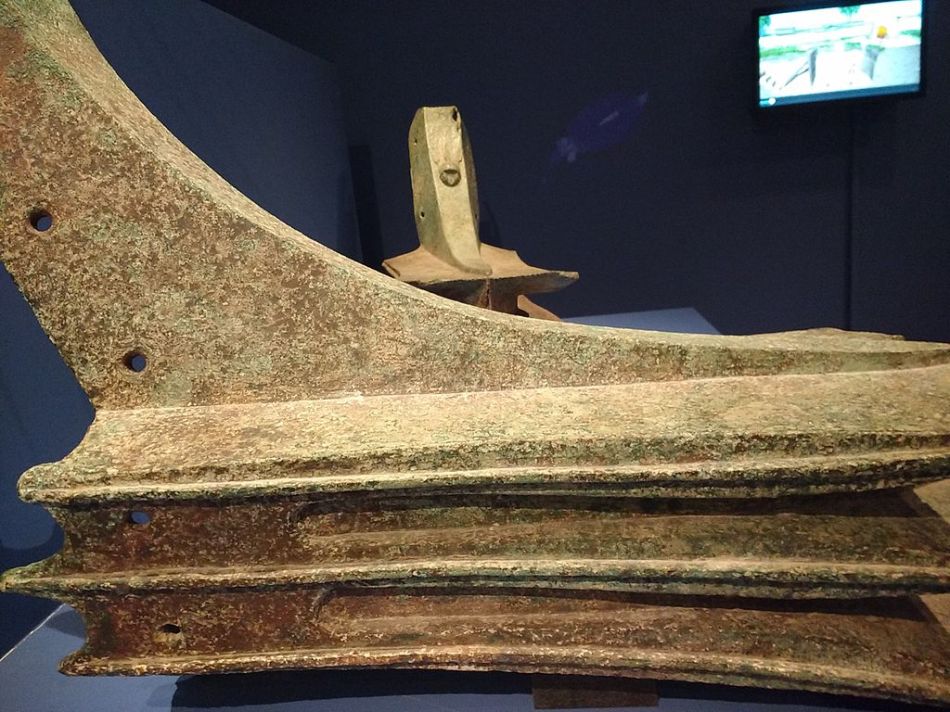When we read about accounts and stories about ancient battles, such as the Battle of the Aegates Islands (also known as the Battle of the Egadi Islands), we are often left to imagine what it would have been like for those involved in the conflict. Nowadays, we are lucky enough to be able to visit or walk along many modern battle sites but ancient battle sites are generally more elusive and difficult to pinpoint, especially when battles are fought on the sea. Often there is a lot of guesswork involved in pinpointing their location but sometimes we are lucky and come across some important scattered clues. But more on these clues in a moment. Here first is a brief summary of the battle of the Aegates Islands.
The naval battle of the Aegates Islands, off the west coast of Sicily, was fought between the Romans and Carthaginians in the year 241 BCE. The result saw the Romans convincing winners over the seafaring empire of Carthage. Why it is important, if not astonishing, is because the Romans were effectively the new boys on the block when it came to seafaring. With little to no naval experience or shipbuilding traditions and even years of bad luck where entire Roman fleets were lost in storms, the Romans would overcome adversity to become masters of the western Mediterranean. How did they do it? Well, they literally built a new fleet of ships from scratch with much of the money for the shipbuilding programme coming from wealthy Roman families.
In the prelude to one of the most famous ancient naval battle in history, the Romans realised it would never defeat Carthage in Sicily without a naval fleet. So they devised a new plan to blockade the harbour surrounding the remains of Carthage’s strongholds on Sicily. It inevitably forced Carthage to act, rousing up an inexperienced fleet to meet the Romans.
The battle itself is best remembered for the cunning way the Romans went about defeating the Carthaginians in particularly with its advantage in speed and maneuverability. Here it is important to mention that the Romans learnt from their previous disasters. That said, the Romans stripped their ships of sails and masts, effectively giving themselves an advantage (better mobility) over the Carthaginians in the rough seas. Their hope was to ultimately trap the Carthaginians, in an attempt to cause the maximum amount of damage, before they could escape.
The most effective tool the Romans (and Carthaginians) used on their warships during this particular campaign was their naval battering ram, which they effectively used to pummel the Carthaginians to smithereens. As a result, up to 50 Carthaginian ships were sunk with around 70 other warships captured along with their crews. The victorious Romans interestingly only suffered the loss of 30 galleys.
In short, with the remainder of Carthaginian fleet in disarray and realising its loses were considerably substantial, Carthage sued for peace effectively ending the First Punic War. The Romans would eventually go on to dish out its own harsh terms for Carthage’s surrender which included a very large indemnity and the control of Sicily.
It’s a great story, right? It’s no wonder why naval historians and marine archaeologists have been obsessed with this ancient naval battle. The only thing that has stopped them from entirely jumping up and down with glee has been finding the actual naval battlefield and any physical evidence of it. That said, it’s not like archaeologists haven’t tried searching for the famous site. My understanding is that they have attempted scouring the seabed surrounding the Aedagian Islands for years, if not decades. Then in 2004, the first lucky break came when it was reported that a bronze ram was seized by Carabinieri police from a private collector. Apparently a fisherman stumbled across it in his dragnet while fishing off the coast of Levanzo (the smallest of the three main Aegadian Islands near Sicliy). Amazing, right? The fortuitous discovery would go on to establish the Egadi Islands Survey Project in 2005, under the co-directorship of renowned Italian marine archeologist, Dr. Sebastiano Tusa and American archeologist Dr. Jeff Royal.
In short, since 2005 in an undisclosed location somewhere in the north-west seabed near Levanzo, the Egadi Islands survey team have discovered hundreds of anchors, amphorae, bronze helmets and importantly many more naval bronze rams believed to be from the battle of the Aegates Islands. In total thirteen amazing bronze rams have been fished out of the sea to date. Importantly, fragments of enemy ships wedged in some of these bronze rams, have helped prove not only the long-standing belief of the existence of the battle but also that the Romans and Carthaginians actually rammed their ships at each other!
With work at the site apparently still teeming with ancient artefacts, archaeologists believe it will take them possibly decades to undertake a completely thorough survey of the site. (The advent of 21st century underwater technology will undoubtedly help them greatly in their endeavours.) But while we wait on more news about any new significant finds, check out the interesting video here below put together by the University of Nottingham, which had helped play a leading role in recent years, in unearthing amazing new finds and helping the Egadi Islands survey team map the surrounding battlefield. Enjoy!

Fascinating, Robert!